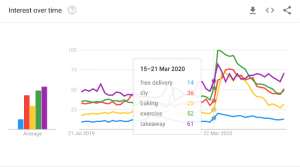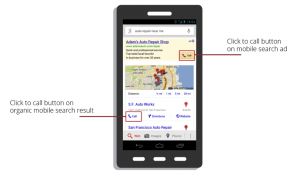From a website to a new product, proving the value of anything relies on how you track, measure, and report on its performance. There’s no difference with social media marketing campaigns.
![]()
To prove all those social media skeptics wrong, you’ll need to provide the return on investment numbers for every single social media effort.
This starts with knowing what social ROI is, how to effectively measure social media, knowing which metrics to track, and what analytic tools are available for you to efficiently prove the effectiveness of social media.
Luckily for you, we cover it all in this post.
Why should you measure social ROI?
Measuring this particular ROI is important for a business, a social media manager, clients, supervisors, CEOs, etc., because it allows you to prove that your social media marketing efforts are working (or not working, bummer). With social media still relatively new to the marketing landscape, it’s one of the channels that gets criticized the most by C-Level executives. But when you’re able to arm yourself with the numbers proving the ROI on social media, you can provide insights into what new business opportunities it has to offer.
3 Ways to Effectively Measure Social Media ROI
#1 – Align your social media goals with your business goals
Before beginning your journey to proving the ROI of social media, you should start with setting social media goals. To ensure you’re effectively proving this ROI you need to make sure that your social media goals are aligned with your business goals. For example, if your business goal is to increase brand awareness, you need a social media goal to mirror that.
#2 – Have the right social media analytics tools in place
Using a social media analytics tools will save you time and your sanity because these tools will take the manpower and brain power out of tracking and measuring your social ROI. If you use a social media management tool, like Hootsuite, they have built in social media analytics. Or you can use the individual social network’s social media analytics, which we’ll explain further below. On top of that you can track your social media traffic through Google Analytics, to prove how much traffic social media is driving to your website.
#3 – Adjust and improve
Measuring social ROI isn’t just about looking at fancy reports, it’s also about using those reports to improve your business social media impact, and to adjust anything on your social media strategy. Use the data you collect to help your social media marketing decisions and to uncover any new business opportunities. For example, if you see that you’re starting to gain traction in a new region, pass that information onto your manager and present new geographic business social media opportunities.
What metrics to consider when measuring social ROI?
When measuring the ROI of social media, you need to make sure that you are tracking the right social media metrics. Why is this important you ask? With numerous social metrics available, it can be a daunting task to choose which metric best suits your business social media goals. Below is a breakdown of some of the most popular social metrics. After reading through them you can decide which ones align with your social goals and allow you to effectively measure social media interactions.

Retweets
If you’re a marketer, you know what a retweet is, so I’m not going to go there, but we will talk about the value of them. Tracking them gives you a sense of the opportunities you’ve had to increase the reach of your tweets to people who may not necessarily be following you.
Mentions
Mentioning a Twitter handle isn’t just for Twitter. You can also be mentioned on Facebook, Instagram, LinkedIn, and Pinterest. Being mentioned allows you to increase awareness of your brand and respective social media profiles, which can directly impact your follower growth rate.
Likes
People who like your social media posts (on Facebook, Instagram, LinkedIn, or Pinterest) indicates that they find what you are posting interesting, but is also an indication to you that their social is being reached. This is a good sign and should be tracked on all your social media profiles to give you insight on whether or not your posts are garnering interest.
Favorites
Very similar to a like, a favorite on Twitter allows your content to be distributed (hopefully) again and again. It’s also another indication surrounding the value of your current content.
Comments
Commenting was the first true engagement metric, and it allows you to track customer feedback and insights. Having a comments section opens the door for interaction with your users, helps spark conversations, and keeps your content relevant.
Shares
Similar to retweets, shares are a way to take your content to the next level. They allow you to spread your content across other people’s social profiles and reach people who you are not directly connected to, driving traffic back to your business.

URL clicks
When you use short links in your social media posts you’re able to track their clicks. Doing this will give you an idea on which social media posts received the most click through rates and actually drove people to your website. In Twitter Analytics you’re able to track engagement on the URLs you include in your tweets. It’s a great way to see which types of posts people are more interested in.
Social media referral traffic
This metric is super straight forward and allows you to review how much traffic is driven to your site through the various social media channels. Just be aware that some can have several names so you may have to group them together (example: LinkedIn).
Follower growth rate
Manager: how many Twitter followers do we have? You (Marketer): I just emailed you our follower growth numbers! Just like that, prove your increase in followers.
Twitter sentiment
Interested in knowing how people feel about your brand or the content you post on Twitter? Use Twitter sentiment to figure out just that. This metric is measured by taking emotions when someone mentions your brand, company, products or services.
Reach by region
Do your social media goals include expansion into Europe? Use reach by region to measure social media opportunity from those regions. This will measure how many people from different parts of the world are engaging with your brand’s social accounts.
Clicks by region
This metric tracks the clicks on your shortened URLs by country. Measuring this will confirm the engagement of your reach by region and solidify any business social media opportunities in those regions.
How to measure social ROI on Twitter, Facebook, and Pinterest
Now that you know what social ROI is, how to effectively measure it, and the metrics you should be tracking, below are some insights on how to track and measure it on Twitter, Facebook, and Pinterest for free.
Twitter Analytics
Last summer, Twitter opened Twitter Analytics for everyone. This made it significantly easier for everyone to gauge how well their tweets resonated with their followers. The free analytics dashboard provides you details on your tweets’ engagement, clicks, retweets, favorites, mentions, and more. All you need to do to gain access to these metrics is to go to https://analytics.twitter.com/ and sign in to your Twitter account.

Above: impressions over a 28-day period. This allows you track and measure how many people saw your tweet.
In the graphic below, there’s more specific information because it shows you the number of impressions, engagements, and engagement rate each of your tweets receive. On the right hand side you’re able to gather your engagement rate, link clicks, retweets, and favorites.

Facebook Insights
Unlike Twitter, Facebook’s built in analytics is only for your fan page (business page). Using Facebook Insights will provide you information on the best time of day to post, the best day of the week to post, what type of content your followers engage with the most, and the ability to track the number of likes your page receives. To access Facebook insights all you need to do is create a Facebook Business Page.



Above are some insights you’ll be provided with via Facebook Insights. Something that’s good to take note of is your page likes and unlikes. Taking note of your unlikes will let you know what kind of posts you shouldn’t be posting. You can also track what kind of engagement you receive the most: likes, comments, and shares. Taking note of this will allow you to create better social media goals.
Pinterest Analytics
Proving the necessity of a Pinterest campaign is easy with Pinterest’s Analytics feature. You can access your those analytics, again, by having a business page. Using Pinterest Analytics allows you to see what people like on your profile, learn what your customers really want, as well as the benefits of Pinterest driving traffic to your website.

You can breakdown the number of impressions, repins, clicks, and likes that each of your pins receive. These reports provide advice on how to increase your Pinterest profile’s impressions, clicks, repins, and refine your strategy to reach more people.
To Conclude
Measuring social ROI is something that is fairly easy if you put the time and effort into building your social media measurement strategy, which is crucial to your social media success. Using social media analytics tools and the built-in analytics in social media platforms, you end up with a plethora of useful information about your social media followers, your social media profiles, and key insights to data that will allow you to create something meaningful with it.
What’s your take on social ROI? We’d love to hear it in the comments below.
(200)








